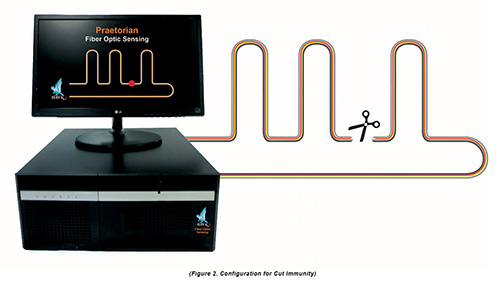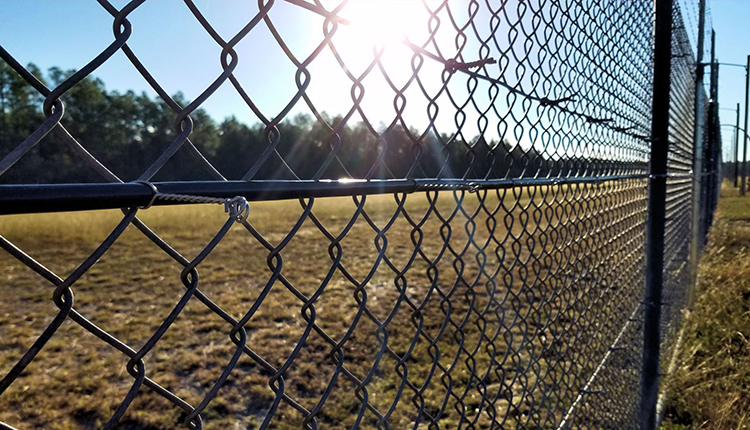Why Fiber Optic Safety Solutions Are the Future of Protection
The change to fiber optic protection systems marks a considerable advancement in the world of defense, driven by their remarkable information transmission abilities and strength to exterior disturbances. As the landscape of security advances alongside emerging modern technologies such as AI and IoT, the potential for fiber optics to boost and redefine safety and security frameworks ends up being progressively evident.
Benefits of Fiber Optic Equipments
Among the key benefits of fiber optic systems is their exceptional data transfer capability, which promotes the transmission of large volumes of information over fars away without significant loss. This characteristic is particularly beneficial for safety applications that call for the continuous tracking and transfer of high-def video clip feeds, sensing unit information, and various other important info. Fiber optics can accommodate the expanding needs of modern security systems, making certain that information stays intact and trustworthy.
In addition, fiber optic wires are much less at risk to electromagnetic interference, which can be a significant issue in atmospheres with numerous electronic devices. This resistance enhances the stability of the information being sent, thus lessening the danger of data violations or system failures. Furthermore, fiber optic systems are inherently much more protected than standard copper cables, as using a fiber optic line without detection is extremely tough.
The resilience of fiber optic wires additionally adds to their charm. They are immune to ecological aspects such as wetness and temperature fluctuations, decreasing upkeep expenses and enhancing system durability. In general, these advantages placement fiber optic systems as a robust and effective selection for modern protection facilities, ensuring dependable and protected data transmission.
Enhanced Information Transmission Rate

The ability to transfer huge amounts of data rapidly helps with the seamless integration of high-def video clip feeds and advanced analytics. Safety systems can now refine and examine details in real-time, enhancing response times and situational understanding. Additionally, fiber optic links sustain longer transmission ranges without deterioration of signal quality, making them optimal for large protection networks.
The raised speed of fiber optic systems not only boosts the performance of security operations however likewise decreases latency. This is especially vital in critical scenarios where timely decision-making can prevent protection breaches or mitigate possible dangers. As organizations continue to focus on safety and security and efficiency, the demand for fast and reputable information transmission will undoubtedly strengthen fiber optic systems as a cornerstone of modern-day safety and security infrastructure.
Resistance to Disturbance
Fiber optic security systems constantly show extraordinary resistance to electro-magnetic interference, a critical benefit in settings prone to electronic noise. Unlike traditional copper wires, which can be adversely affected by magnetic fields, radio regularity interference, and various other kinds of electric disturbance, fiber optic cable televisions make use of light to transfer data. This integral property guarantees that the signals stay clear and unaltered, regardless of bordering electronic task.
Using glass or plastic fibers in fiber optic innovation creates a barrier versus interference, permitting dependable information transmission even in tough situations such as commercial facilities, metropolitan locations with high electronic traffic, or locations near radio towers. This characteristic substantially reduces the chance of signal destruction or loss, making fiber optic systems especially suitable for protection applications where integrity and precision of information are extremely important.
Furthermore, this resistance to disturbance boosts the total performance and integrity of security systems, making certain that surveillance and sharp systems work seamlessly. In a globe where safety is progressively intimidated by sophisticated technologies, the durability of fiber optic systems attracts attention as a critical function, strengthening their condition as an important element of modern-day protection facilities.
Cost-Effectiveness Gradually
Considerable price financial savings can be achieved gradually with the implementation of fiber optic safety systems. While the initial financial investment may seem higher compared to standard copper-based systems, the long-term monetary benefits emerge with decreased functional and maintenance prices (fiber security). Fiber optic cable televisions are naturally a lot more durable and less vulnerable to environmental variables, which converts to decrease replacement and fixing expenses over their life expectancy
Furthermore, fiber optic systems call for much less power to run, which additionally lowers power prices. Improved information transmission abilities permit for fewer repeaters and amplifiers, reducing tools financial investment and enhancing setup processes. The scalability of these systems also adds to cost-effectiveness, as organizations can expand their security framework without description sustaining substantial added expenses.
Another variable to think about is the raised performance in tracking and action capabilities that optical fiber offer. Improved real-time data transmission can cause quicker occurrence feedback times, potentially mitigating losses and responsibilities associated with protection breaches. In sum, the long-lasting benefits of fiber optic safety and security systems not only justify the first expense yet likewise position them as a financially prudent selection for companies looking for robust defense remedies.

Future Innovations in Protection
Advancing innovations are readied to transform protection systems, integrating synthetic knowledge (AI) and machine discovering to enhance danger detection and response capacities. These developments will certainly allow safety systems to redirected here examine substantial amounts of data in real-time, determining patterns and anomalies that indicate possible hazards. This aggressive approach will certainly allow faster decision-making and a lot more reliable incident responses.
Furthermore, the consolidation of the Web of Things (IoT) is leading the way for interconnected safety tools, providing detailed surveillance and monitoring. Smart sensors can communicate details about environmental changes, while automated notifies can notify security employees instantly of questionable activities.
Furthermore, the advancement of biometric modern technologies will certainly even more reinforce safety devices. Facial recognition, finger print scanning, and retina recognition are coming to be much more sophisticated, giving layers of verification that are hard to bypass.
Conclusion
Finally, fiber optic protection systems represent a considerable development in protection technology, supplying unparalleled information transmission rate, resistance to electro-magnetic interference, and long-lasting cost-effectiveness. As the need for innovative safety services remains to expand, the integration of fiber optics with emerging modern technologies such as AI, IoT, and biometrics will further enhance security infrastructures (fiber security). The mix of these advancements will certainly ensure a more protected and responsive browse this site environment, strengthening fiber optics as a foundation of future safety and security systems